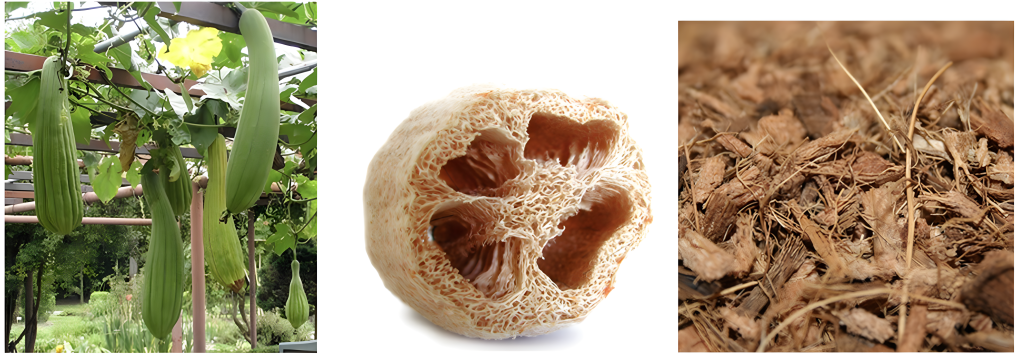3.2 What filter media is used in a trickling filter?
Trickling filters (TFs) represent non-submerged fixed-film biological reactors where a supporting media, often composed of stones or plastic materials, fosters biofilm growth. The attached biofilm oxidises the organic matter to carbon dioxide and water while generating new biomass.
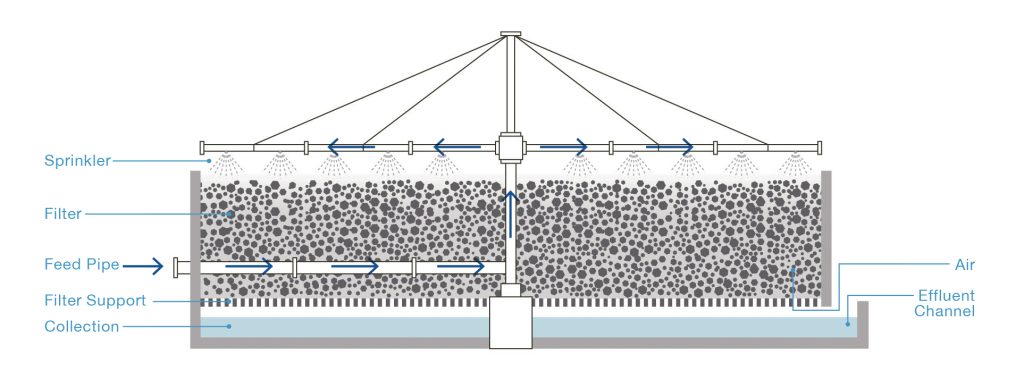
Traditionally, a prevalent design featured a 1 to 3-meter-deep bed of stones through which wastewater flowed. A rotating arm distributes the wastewater evenly over the surface of these stones.
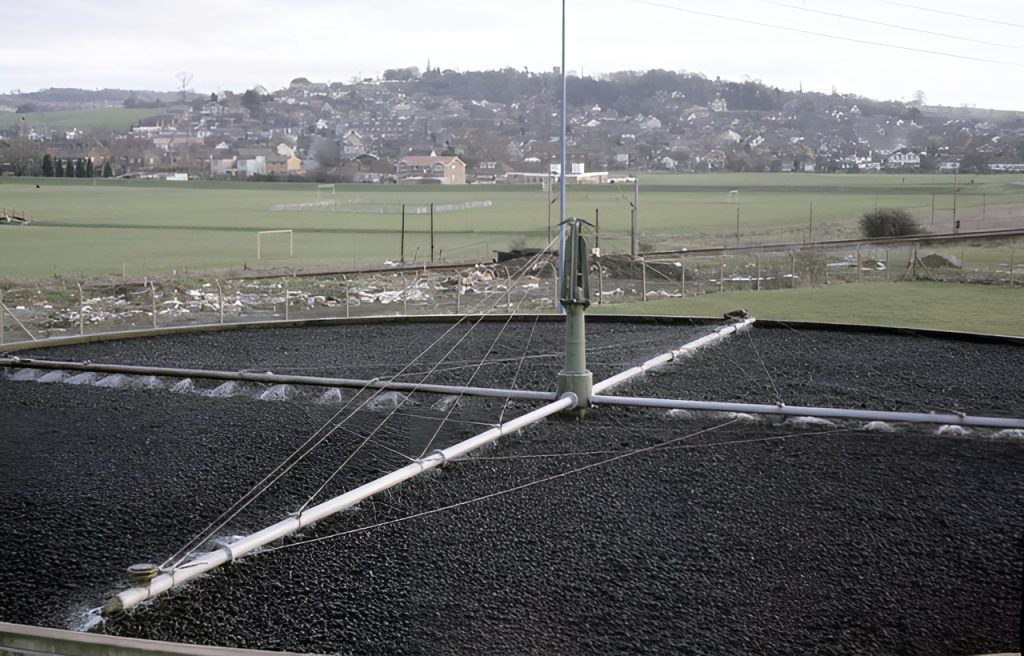
Even though the rounded TF with a rotating arm is very common, the filter can also be rectangular or square with fixed spray heads, as shown in the following example from a refugee camp in Bangladesh. However, the wastewater distribution on the top of the filter is less evenly distributed than for the round systems.
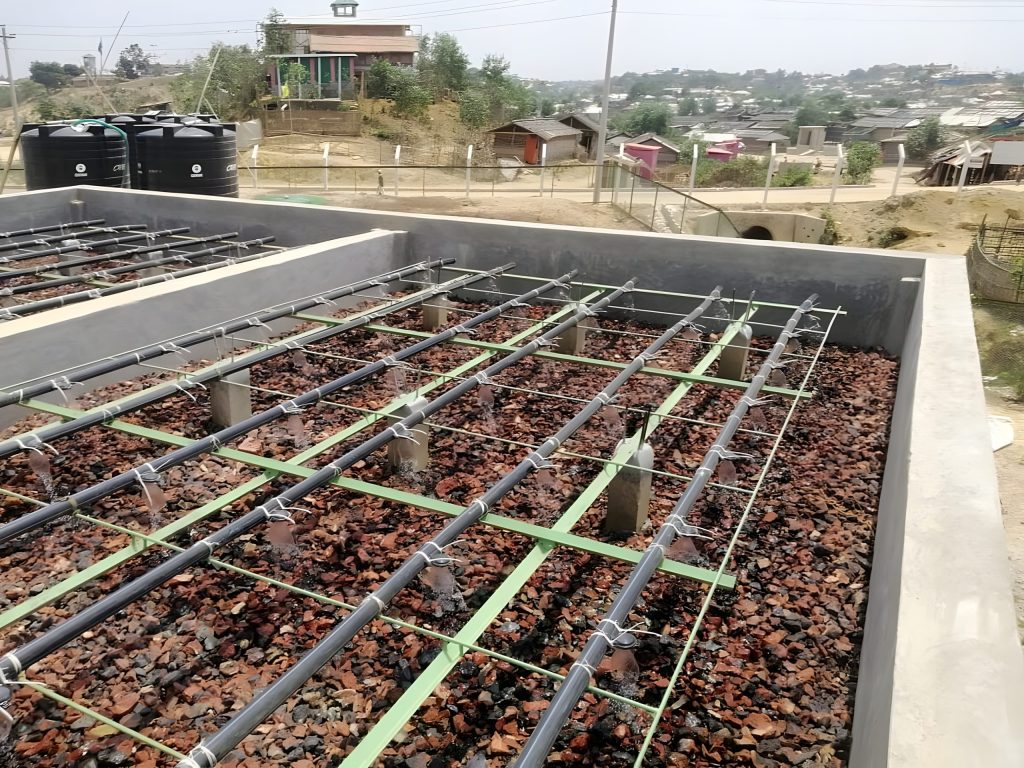
Despite their name, trickling filters are not filters and are primarily not intended for liquid filtration or particle straining. The 50-80 mm diameter stones within the rock filter have too large openings to strain out particles effectively. Instead, these stones offer a substantial surface area for microbes to attach to and form a biological layer as they metabolise organic matter.
Although rock trickling filters have served well for many years, they come with certain limitations. In scenarios with high organic loads, excessive slime growth can clog the gaps between the rocks, resulting in overflowing and system failure. Furthermore, the confined spaces between the rocks reduce air circulation, limiting the oxygen available to microorganisms, which, in turn, restricts the capacity for processing effluent.
To address these constraints, alternative media materials have gained popularity for trickling filters, including corrugated plastic sheets and ring modules. A further advantage of plastic filter media is the weight; thereby, more structural height can be provided to enhance the treatment performance.
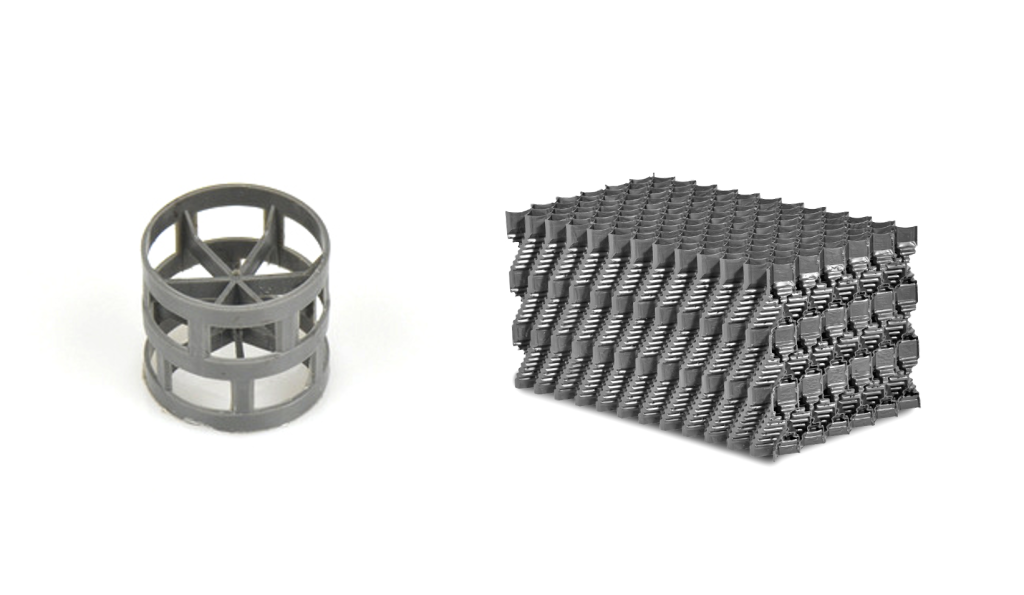
If prefabricated materials are unavailable, other light plastic materials like pipes, balls, or cut bottles can be used. A case from Morocco illustrates this, where cut pipes were used as a filter media.
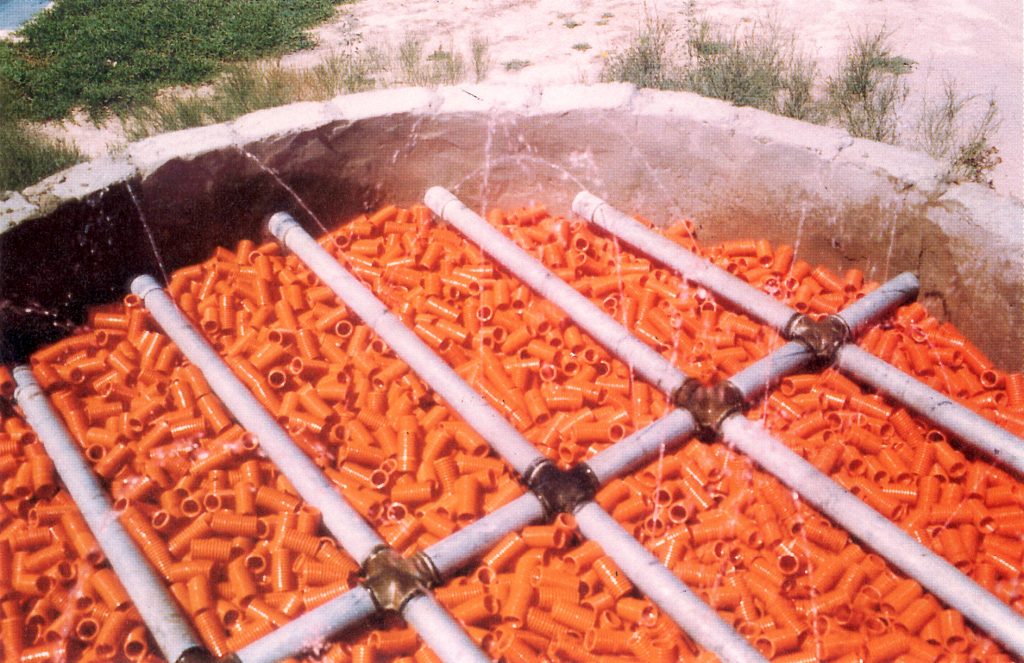
Natural organic materials such as Luffa Cylindrica or coconut husk can replace inert media for smaller water treatment facilities. After several months, however, this material must be removed and replaced, which is associated with higher effort for maintenance. The natural filter material can be composted or treated before being used in agriculture.
